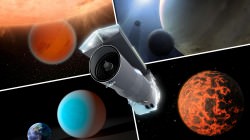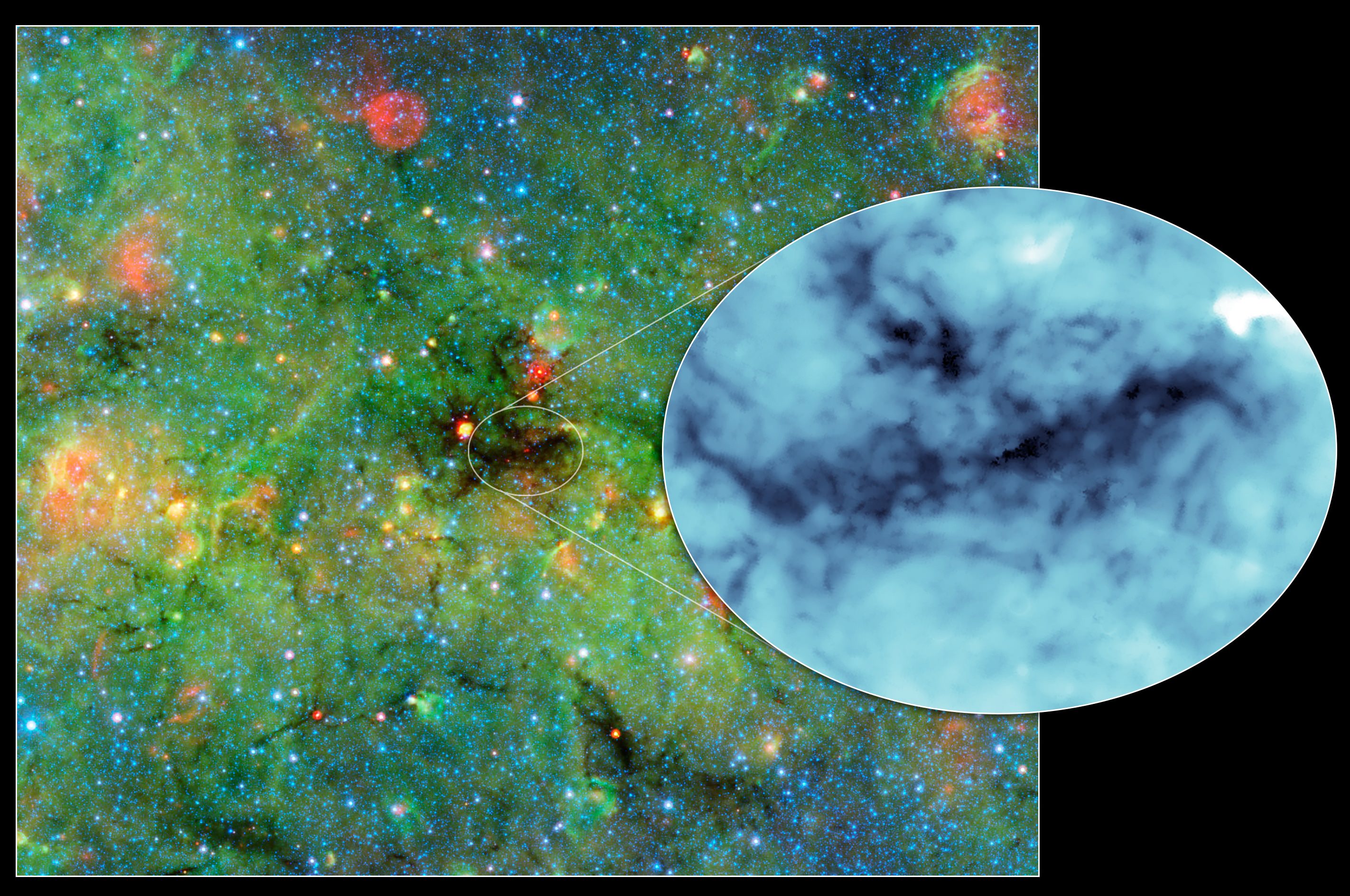When gas and dust squeeze tightly enough together in space, no light can get through and the place is black as pitch. But this dusty cloud seen about 16,000 light-years away from us will eventually generate new stars, with the darkest parts creating powerful O-type stars — a star-type poorly known to scientists.
“The map of the structure of the cloud and its dense cores we have made in this study reveals a lot of fine details about the massive star and star cluster formation process,” stated Michael Butler, a postdoctoral researcher at the University of Zurich in Switzerland who led the study.
The new study, which included observations from NASA’s Spitzer Space Telescope, examined the shadows these clumps cast and concluded this cloud is about 7,000 times more massive than the sun, and about 50 light-years in diameter. Because Spitzer examines the universe in infrared light, this allows it to peer through dusty areas that are difficult or impossible to see in visual light, allowing Spitzer to examine different astronomical phenomena.

Looking at clouds such as this one are expected to shed more light (so to speak) on how O-type stars are created. This stellar type is at least 16 times as massive as the sun (but can be much more) and is known for its wind and powerful radiation, that clean out the neighborhood of any dust or gas that could have formed other planets or stars.
Once these stars reach the end of their short lives, they explode as supernovas and also create heavier elements that are found in rocky planets and in the case of Earth (as far as we know), living beings. Researchers are still unclear on how the stars are able to pick up mass that is so much more the mass of our sun without breaking apart.
A mission extension for Spitzer was not approved after a NASA Senior Review made public last week, but officials were told to submit a revised budget for consideration in 2016.
You can read more about the study, which was published earlier this year, in Astrophysical Journal Letters.
Source: Jet Propulsion Laboratory

